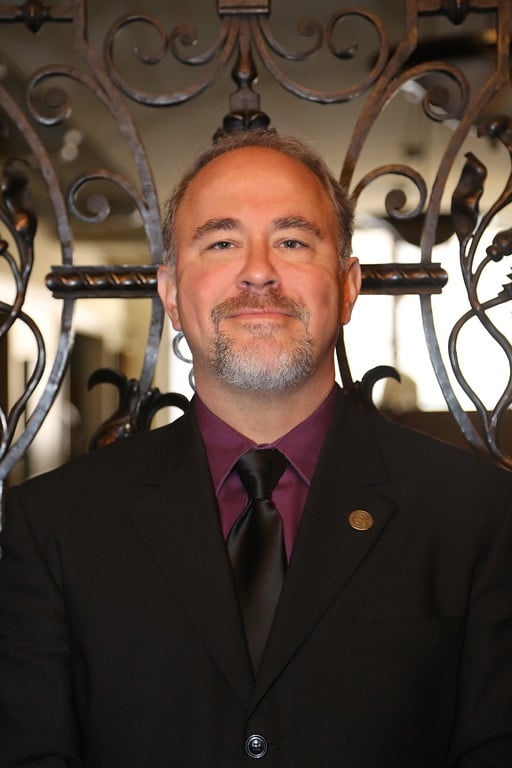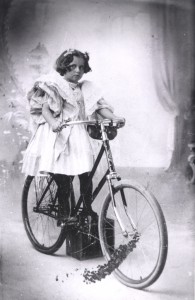As a child I always looked forward to the Christmas season: a time for family and friends, Christmas tree decorating, and candle light services at my church in Stoughton, Massachusetts. At the end of 1979, when I was ten years old, I was given a chance to write a report for extra credit for my fifth grade teacher. The topic, for our history/social studies class, was up to me. I had already been doing genealogy for a couple years at that point and wanted to solve mysteries. What about Santa Claus? Was he a myth? as I was beginning to suspect.
Warming to the subject, I canvassed my classmates. Some were disbelievers; others knew that Santa was real. My teacher overheard me and told me that a little girl named Virginia once wrote a letter to the newspaper with an inquiry like mine. I figured my teacher was pulling my leg, and that she made it up. That evening I told my mother I needed to go to our public library for homework. I was a regular visitor to our public library in Stoughton, where I now serve as a trustee. The handy Encyclopedia Britannica proved my teacher correct. In 1897, an eight-year-old girl named Virginia wrote “Papa says ‘If you see it in the The [New York] Sun it’s so.’ Please tell me the truth; is there a Santa Claus?”
Her letter appeared in the Sun on 21 September 1897. The letter was published in an editorial written by a former Civil War correspondent named Francis Pharcellus Church. His reply to Virginia spoke volumes to the young girl and many other children that year:
Yes, Virginia, there is a Santa Claus. He exists as certainly as love and generosity and devotion exist, and you know that they abound and give to your life its highest beauty and joy. Alas! how dreary would be the world if there were no Santa Claus! It would be as dreary as if there were no Virginias. There would be no childlike faith then, no poetry, no romance to make tolerable this existence.
We should have no enjoyment, except in sense and sight. The external light with which childhood fills the world would be extinguished.
Not believe in Santa Claus! You might as well not believe in fairies. You might get your papa to hire men to watch in all the chimneys on Christmas Eve to catch Santa Claus, but even if you did not see Santa Claus coming down, what would that prove? Nobody sees Santa Claus, but that is no sign that there is no Santa Claus. The most real things in the world are those that neither children nor men can see. Did you ever see fairies dancing on the lawn? Of course not, but that's no proof that they are not there. Nobody can conceive or imagine all the wonders there are unseen and unseeable in the world.
You tear apart the baby's rattle and see what makes the noise inside, but there is a veil covering the unseen world which not the strongest man, nor even the united strength of all the strongest men that ever lived could tear apart. Only faith, poetry, love, romance, can push aside that curtain and view and picture the supernal beauty and glory beyond. Is it all real? Ah, Virginia, in all this world there is nothing else real and abiding.
No Santa Claus! Thank God! He lives and lives forever. A thousand years from now, Virginia, nay 10 times 10,000 years from now, he will continue to make glad the heart of childhood.
Now my genealogical curiosity had kicked in – who was Virginia? In the days before quick Google searches I discovered that I would need to write some letters and scan some microfilm. I started by writing to the New York Public library. The librarians there informed me the little girl “Virginia” was in fact a real little girl! Laura Virginia O’Hanlon was born in Manhattan on 20 July 1889.
Virginia graduated from Hunter College in New York with the class of 1910. She obtained her master’s degree in education from Columbia in 1912, and later a doctorate from Fordham University. She worked in the education field until she retired in the late 1950s. I had hoped to write a letter to Dr. Virginia O’Hanlon Douglas – sadly, she died when I was nearly two years old, on 13 May 1971, at the age of 81. Her last living grandson Jim Temple still gets newspaper inquiries all these years later about his famous grandmother and her letter. Virginia’s descendants carry on her legacy to keep Christmas alive in the hearts of children.
The story of Virginia was first published more than a century ago; learning about it helped this former ten-year-old regain his faith in Santa Claus. As my daughters question the whereabouts of their Christmas gifts and fret about Santa Claus, I will offer them the same reply Virginia received. And I hope they do the same for their children and grandchildren for years to come.
Merry Christmas!
Share this:

About David Allen Lambert
David Lambert has been on the staff of NEHGS since 1993 and is the organization’s Chief Genealogist. David is an internationally recognized speaker on the topics of genealogy and history. His genealogical expertise includes New England and Atlantic Canadian records of the 17th through 21st century; military records; DNA research; and Native American and African American genealogical research in New England. Lambert has published many articles in the New England Historical and Genealogical Register, the New Hampshire Genealogical Record, Rhode Island Roots, The Mayflower Descendant, and American Ancestors magazine. He has also published A Guide to Massachusetts Cemeteries (NEHGS, 2009). David is an elected Fellow of the Massachusetts Historical Society in Boston, Mass., and a life member of the New Hampshire Society of the Cincinnati. He is also the tribal genealogist for the Massachuset-Punkapoag Indians of Massachusetts.View all posts by David Allen Lambert →
